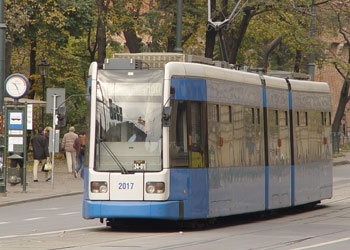A Krakow Underground?
A recently completed feasibility study for the construction of a “pre-metro” system in Krakow foresees two underground tram lines in the city. One would run east-west, from the Mogilskie Roundabout to ul. Kólewska, the other north-south, from ul. Kamienna to Podgórski Square. Together they total only 8.5 km, but the study claims that these lines could in the future be extended to form a metro system that could run west to Bronowice, east to Nowa Huta, north to Prądnik Bialy and Czerwony, and south to Bieżanów.
It sounds nice until one hears the price tag: 2.5 billion złoty. Krakow’s residents would also need to brace themselves in a lot of patience, because the project is predicted to last from 2012 until 2030.
Stanisław Albricht, whose company Altrans completed the study, does not seem concerned about the costs, offering a comparison to the cost of Dubai’s shiny new metro system splattered with gold. While Dubai’s metro cost 400 million złoty per kilometre, Kraków’s will only cost 300 million złoty per kilometre.
A metro system for Krakow was already being planned in the 1970s, but was eventually abandoned about 20 years ago because it was too expensive. Albricht claims that today the technology for digging tunnels is improved, allowing faster, and therefore cheaper completion of the project, which is a modified version of the one from the 1970s. According to him, the city would need to do some intensive lobbying in Warsaw to get funds for the project.
Not surprisingly, the project has attracted the scepticism of experts. Barbara Bartkowicz, president of the Krakow office of the Society of Polish Town Planners, told the Warsaw Business Journal that “[The pre-metro] will be unprofitable according to several expert appraisals. The costs of construction will considerably exceed the benefits of its use.”
Another problem seems to be practicability. Simply put, does Krakow really need a 2.5 billion złoty metro system? Krakow’s transport system was in the top 10 (ninth) of a Forbes ranking of public transport systems in the world in 2008, which took into account expense, reliability, and efficiency. And there are already 27 tram lines comprising a total of 333 kilometres crossing the city. Also, Krakow’s population does not exceed one million, making it not such a huge conglomerate definitely in need of a metro system. Some have also pointed out the fact that the city has many unused rail lines that it should take advantage of.
Of course, the traffic in the city centre is quite bad during morning and afternoon rush hours, and a metro system would relieve some of that. But, instead of waiting 30 years for a metro system, perhaps there are cheaper and faster solutions. Maybe more cars could be restricted from entering the city centre, since that is one of the main reasons trams have a hard time there. Albricht claims that a park-and-ride infrastructure would be an integral part of the metro system. But, can’t a park-and-ride infrastructure could be put in place without and metro system? Commuters could leave their cars and use the existing tram and bus transport, given that it continues to be improved.
Also, perhaps Krakow has too many transport investments at once. One of the major ones is the building of a third highway bypass, expected to cost three billion złoty.
But, for now the pre-metro still has a long road before, and if, it becomes reality. The next step is a geological study, which will help more accurately predict the costs. After that, the city council and then the president need to decide if the project will proceed.

